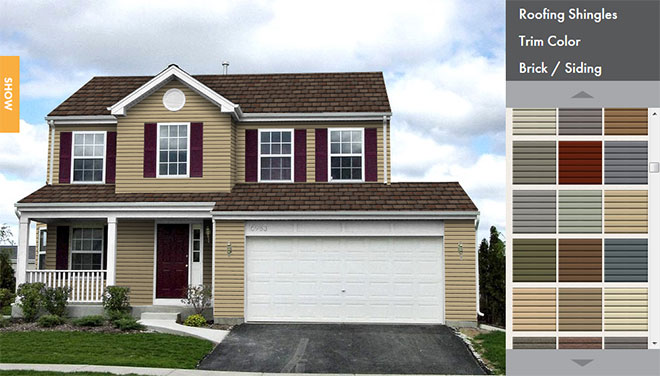Roof Management Plan For Commercial Properties MN
Those who are responsible for their organization’s roofing assets (plant engineers, property managers, building owners) should accept that their roofs will all eventually fail. Buying the best new roofs they can afford, and making the most of the roofs they have, should be their goal. Here are the keys to an effective roof management plan.
A Good Roof Starts With A Good Design
This is a quote about roofs I heard. It goes, “There are only two types of roofs, those that leak and those that will leak.” A simple and indisputable observation.
A good roof starts with a combination of quality of the original product used, appropriateness of design and material selection, and care and quality of installation. Following good roof design and installation practices creates the opportunity for each roof to reach its potential design life.
Rarely is there one product that fits every need. Instead, for each new roof decision, define and understand the site-specific design requirements and select the roofing solution that best suits that set of requirements. Some of the design variables to consider are:
- Building code requirements (wind, fire, hail, energy ratings)
- Occupancy issues (sensitivity to noise, dust, fumes)
- Slope/drainage issues
- Roof traffic/roof durability
- Climatic exposure
- Construction access (getting materials, equipment, etc., on and off the roof)
- Budget
- Goal for longevity
These are certainly not all the roof design criteria that will be encountered, and some may not be appropriate in all cases. Prioritize the design criteria in terms of their relative importance, and use the criteria to sift through the possible roofing options.
Roof design is not complete until the roof details are defined. Where the roof meets vertical transitions (roof edges, parapet walls, penetrations, etc.), there are usually several detail options, some good and some not as good. Preparing detail drawings that show how all the various building components connect and shed water makes the roof design complete and reduces the number of RFOs (Roofer Figure Out).
Making Roofs Last – Roof Inspection and Maintenance
Roofs, like every other building component, eventually wear out and need to be replaced. Given a well-designed and installed roof, the remaining variable in the longevity equation is how well the roof is maintained. Maintaining roofs is simple; it just takes a little know-how and consistent effort.
Roofs are low on most facility priority list when it comes to investing time, energy and money. But, just as machinery needs to be oiled and filters need to be changed, roofs need to be maintained or breakdowns will result.
The phrase “predictive maintenance” is being used in some circles in place of “preventive maintenance.” In some ways, predictive maintenance indicates an even higher level of planning for and maintaining roofs.
Predictive maintenance also indicates that there are specific actions that can be taken to prolong a roof’s life or improve its performance. Part of our roof management plan is to identify what opportunities (repairs, coatings, etc.) exist for each roof and anticipate the optimum time to act.
Whether it’s preventive or predictive roof maintenance, these benefits accrue to those facility managers who establish an ongoing roof management effort:
Primary Benefits
- Fewer roof leaks
- Longer roof service life
- Anticipated roof replacement vs. emergency replacement
- Lower life cycle costs
- Secondary Benefits
- Reduction in costly emergency or crisis repairs
- Less product damage
- Minimizing consequential leak damage to interior finishes
- Improved relations and reputation with building occupants
Establishing a Roof Preventive Maintenance (PM) Program
Jumping right in and filling pitch pans would be a definite improvement over no PM effort at all, however, the best first step is to gather information about each roof. A complete historical file assists in diagnosing conditions observed during roof surveys and facilitates accurate and complete development of repairs.
Most facility engineers who acquire roofing responsibilities as part of their duties start with existing buildings. More often than not, all the roof information usually walks out the door with the guy whose job you now have. Now the job is yours, where will you begin? With existing roofs, the following information on each roof should be gathered:
- Date of installation
- Installing contractor
- Roof system manufacturer
- Existence and duration of warranties
- Type of roof membrane, insulation and roof deck
- Leak history, including any warranty claims and their resolution
- Repair history, dates, type and cost of repairs
- With newly completed roofs, establishing this information file should be part of the closeout document. Information should include:
- As-built plans and specifications, including addenda
- Current roof plans showing locations of penetrations and equipment
- Minutes of pre-bid and pre-construction meetings
- Shop drawings and product data
- Daily construction quality assurance reports
- Change orders
- Correspondence relating to the installation of the roof system
- Manufacturer or contractor warranties
- Documentation of roof inspections or evaluations, including photos
- Documentation of repairs or corrective action
- Documentation of changes made to the roof or new equipment installed
Surveying Roofs
No roof can be appropriately managed without knowing the roof’s history and understanding the current condition of the roof. The current roof condition is obtained by conducting roof inspections or surveys.
The person performing visual roof surveys should be very familiar with the design, installation, repair, and types of failure specific to the roofing system being surveyed. Whether surveys are conducted by in-house staff or contracted to a consultant depends on the technical competence and availability of your resources. In-house personnel who have had training in roof inspection, diagnosis, and repair can adequately conduct these surveys.
The roof survey should include:
- Examination of roof membrane, flashings, sheet metal flashings, drains, gutters, etc.
- Evaluation of observed conditions that may impact the long-term performance of the roof system
- Documentation of deficiencies requiring corrective action
- Development of long-range preventive maintenance needs
Survey documentation should consist of a written report or checklist, photographs, and notes on a roof plan indicating the conditions observed. The roof plan should supply enough data to facilitate performance of the required repairs. Several checklists are available for documenting conditions observed during a survey. However, these checklists sometimes fall short of conveying all conditions assessed over the long term.
Survey Frequency
How often you need to perform the various tasks associated with a roof preventive maintenance program depends on the age and condition of the roof, environmental influences, rooftop traffic, occupancy sensitivity, size and roof accessibility. The following guidelines can help determine the frequency of the tasks:
- Perform comprehensive visual roof surveys semi-annually. For roof areas in good condition, with limited rooftop traffic, perform a comprehensive survey in the spring. Do limited overview surveys in the fall to ensure integrity prior to winter weather.
- Conduct warranty surveys before the contractor’s or manufacturer’s warranty expires. This allows the repair of any deficiency covered before the expiration of possible monetary obligations.
- Perform housekeeping surveys on most roof areas monthly. These surveys help identify potential problems. You might need to increase the frequency of these surveys. For example, during the fall, roofs adjacent to trees may require crews to remove vegetation weekly.
- Schedule corrective steps or repairs soon after the survey. If corrective action is delayed, small isolated deficiencies may become major problems that can be expensive and difficult to repair.
- Conduct roof moisture surveys on three-year cycles unless specific conditions exist that warrant more frequent surveys or you suspect moisture in the roof system. Perform the first or baseline survey before the contractor’s warranty expires so repairs can be covered under the terms of the warranty. In any case, the first roof moisture survey should be performed within the first two to three years after installation.
Match Repairs to Life Expectancy
Once the defects and deficiencies are cataloged for each roof, a maintenance/repair method must be selected for each. This is not difficult. There are numerous resources a facility manager can turn to in this effort. The National Roofing Contractors Association has a very good Roof Repair Manual, complete with illustrations depicting various repair efforts. Most roofing manufacturers also have printed repair recommendations.
The primary point here is to make a repair that matches the remaining life expectancy of the roof. For example, we don’t replace deteriorated flashings on a roof where there are significant, irreversible roof membrane defects. In such a case, we patch, seal, or repair flashings to improve waterproofing ability, not with the goal of extending the roof’s life.
Information Management
Keeping track of one or two roofs and the related information does not require a spreadsheet or roof database. As the number of roofs increases, however, a roof management database can be a powerful tool in tracking your roofing assets. Again, there are a number of vendors in the marketplace for this type of service.
Summary
Don’t let good roofs sit neglected. A well-devised roof management plan will make a bottom line difference.
By collecting the aforementioned roof history and condition information, deciding what corrective actions are necessary and when they should be implemented should be more obvious. The mechanics of how to implement the corrective and maintenance part of the plan is the subject of a future article.
Different Roofs – Different ConcernsWhile there are many commonalities between the various generic roof types, each roof type has distinct aging characteristics and develops different defects. The defects an inspector will find in built-up roofing will be different from those found in EPDM rubber. We have listed below several common conditions that affect the long-term performance of a roof, regardless of roof type, as well as differences to look for in the three most common roof systems:
|


 Click Here
Click Here Click Here To Use
Click Here To Use